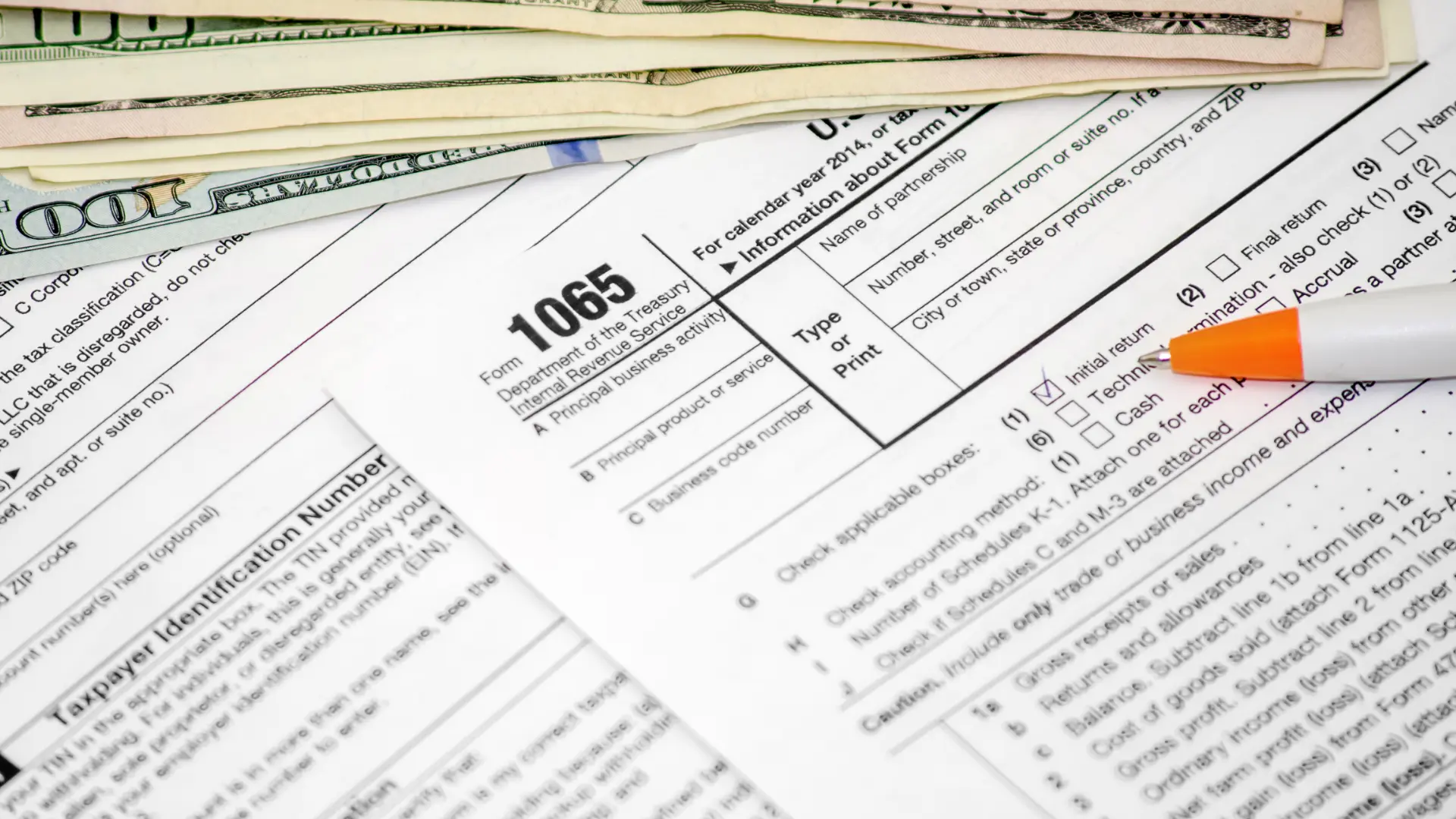Every year, partnerships fill out Form 1065, the "U.S. Return of Partnership Income." This form tells the IRS about the partnership's money. It lists income, gains, losses, deductions, and credits from running the business. Since partnerships pass income and losses to their partners, each partner pays tax on their share. They do this by reporting the partnership's income on their personal tax returns.

IRS Form 1065 is a tax return for partnerships. It shows the money the partnership made or lost. Partnerships pass on their profits or losses to the owners. The owners then report this on their own tax returns.
Partnerships and some LLCs, viewed as partnerships for taxes, must submit Form 1065. This includes domestic and international partnerships earning money in the U.S., plus certain non-profit groups like 501(d) organizations.
Partnerships use Form 1065 to tell the IRS about their financial activities. This includes what they earned, what they spent, and if they made a profit. The IRS uses this to figure out taxes for each partner. Partners get this info on Schedule K-1 to report on their personal taxes.
Any domestic partnership or LLC, even if it's a foreign partner, must file Form 1065. This also includes certain nonprofit religious groups. Even small partnerships must file if they meet certain income or asset requirements.
To fill out the IRS tax form 1065, partnerships should collect various financial papers and tax forms. This includes profit and loss sheets, balance sheets, and more. They may also need forms like W-2, W-3, and several others. These documents show a partnership's financial health over the year.
Partnerships have to file Form 1065 by the 15th day of the 3rd month after their tax year ends. For those on a calendar year, this is March 15. When the deadline lands on a weekend or holiday, they get until the next working day to submit.
If a partnership needs more time, they can ask for a 6-month extension. They do this by submitting Form 7004, Application for Automatic Extension of Time To File Certain Business Income Tax, Information, and Other Returns. But remember, an extension to file does not mean an extension to pay taxes. Partners must still estimate their taxes and pay them by the original due date.
Partnerships must submit Form 1065 by the 15th day of the 3rd month after their tax year ends. Each partner needs a Schedule K-1. It shows their part of the partnership's income and more for their tax returns. Form 1065 gives an overview of the partnership's finances. Schedule K-1s then share this info with each partner.
The Schedule K-1 is crucial in the partnership tax process. It lets partners report their share of profits or losses to the IRS. Partnerships themselves do not pay tax. Instead, they share details with partners who use K-1s for their taxes. Different types of entities use different K-1 forms.
Partners should make sure the partnership submits Form 1065. They also need to give K-1s to all partners. This is to accurately report each partner's income on their tax return, as agreed in the partnership deed.
It's important for partners to understand they don't get 1099 forms from the partnership. They use the Schedule K-1 to show their share of the partnership's profit or loss on their taxes.
The Schedule K-1 also shows if partners have self-employment earnings. They might need to pay self-employment tax on this income.
It lists the partnership's financial details, which are important for tax filing. Partners use this info to complete their personal tax return.
Box 1 on the Schedule K-1 notes the business's regular earnings or losses. Other boxes break down specific financial details needed for taxes.
Partners should use the IRS guidelines to fill out their Schedule K-1 accurately. These instructions help in understanding which codes to use for different financial items.
If a partnership doesn't file their 1065 form on time, they could face big penalties. The IRS might charge $220 for each month the return is late, for up to 12 months, for every partner involved. A further penalty of $290 per inaccurate Schedule K-1 is possible, with a cap of $3,532,500.
If a partnership ignores the reporting rules on purpose, the penalties can get even steeper. So, it's crucial for partnerships to file their 1065 form and Schedules K-1 correctly and without delay every year.
The penalty could change based on how late the filing is, how many partners are in the business, and the tax that remains unpaid. But, the IRS might forgive the penalty if there's a good reason, a history of timely filing, or if an extension was asked for.
Late penalties come with their own costs, interest, and more IRS attention. They could also harm the partnership's image, add stress, waste time, and lead to lost tax benefits and deductions.
Partnerships can reduce penalty risks by being well-prepared and having a systematic approach. They should routinely check on the filing status, keep good records, request extensions when necessary, and consider e-filing. These steps can help avoid the heavy financial and business impacts of missing the 1065 filing deadline.